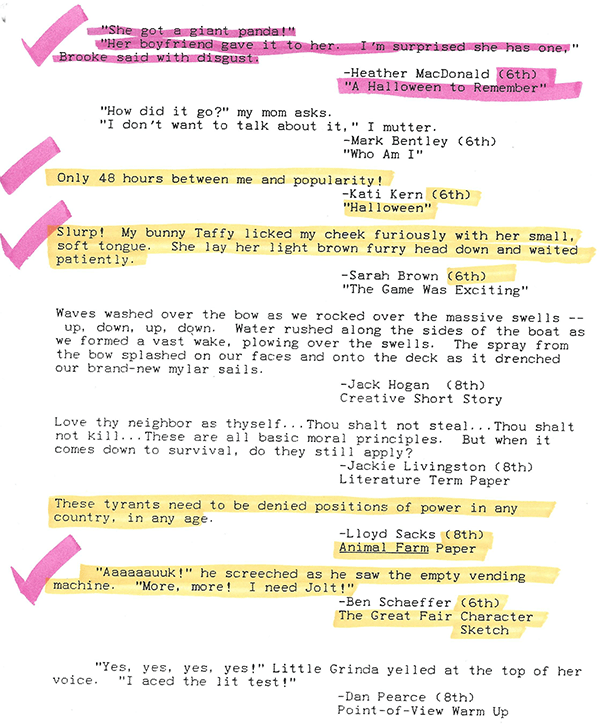
The stack of student papers lurks on the corner of your desk, just waiting to be marked and graded. Yes, the rubrics and grading standards will be applied conscientiously, paper after paper. Your students wait, some in dread, some in hopeful anticipation, for your final judgments on their papers. But wait — there’s another way to evaluate student writing — one that I read many years ago in the English Journal. It revolutionized the way I taught writing to my middle schoolers, and I hope it may resonate with you.
This innovative method rewards those sparkly gems in student papers that stand out in and of themselves, even just one sentence or one paragraph, regardless of the merits of the rest of the paper. Indeed, my students eagerly looked forward to getting their papers back, just to see if they got a “Copy to the Green Book” notation in the margin. Even a sentence in a “C” paper could qualify for being included in the Green Book, if the voice and word choice were exemplary. Sometimes, a paper that earned an “A” didn’t necessarily contain a sentence or paragraph that could earn a place in the Green Book.
What, then, is this Green Book, into whose pages my students yearned to be able to copy their work? It was a large, green (imagine that!) three-ring binder on a shelf in my classroom, with plenty of blank, ruled notebook pages on which students could copy their gems. The brilliance of these contributions was admired by all the students who would eagerly pick up the Green Book and page through it in their odd moments in class or at recesses. By doing so, they not only could appreciate good writing and be inspired themselves, but they caught a glimpse of what vivid writing really was. Students from other classes enjoyed reading the Green Book, as well, and compliments and fist-bumps were the orders of the day, bringing shy or triumphant smiles to the authors.

One of my fondest memories of teaching writing was a day I was passing papers back to my 8th graders, and one of the athletes in the class raised both his arms in the air and exclaimed joyously, “YES! I got something in the Green Book!” The Green Book both inspired and affirmed my students’ excellent writing gems and made them excited and eager to write. Letter grades, of course, are always important, but the possible reward of being in the Green Book was what often motivated my students to try their best, no matter what the assignment was. In short, it truly revolutionized my teaching of writing, and I hope it may do the same for you.

What a great idea, Margo! I’m sorry I no longer have my own classroom so that I could use this.